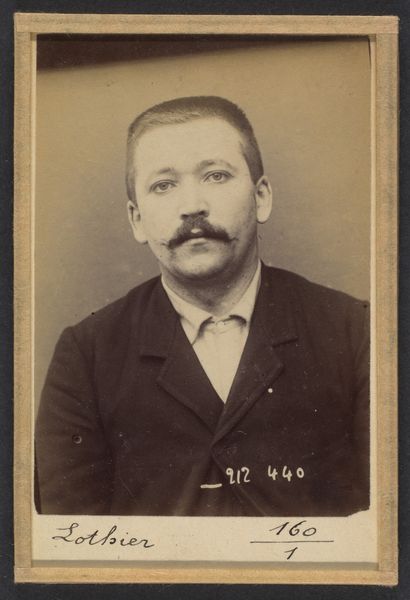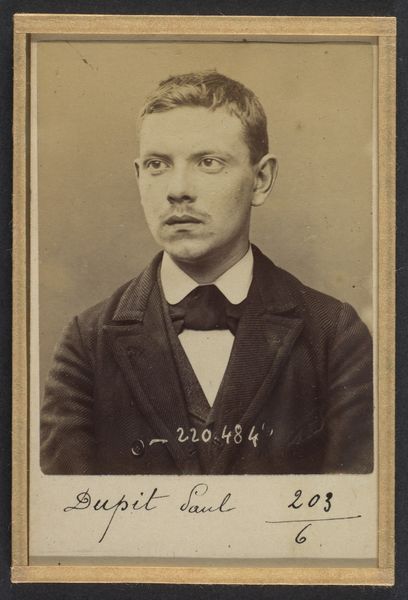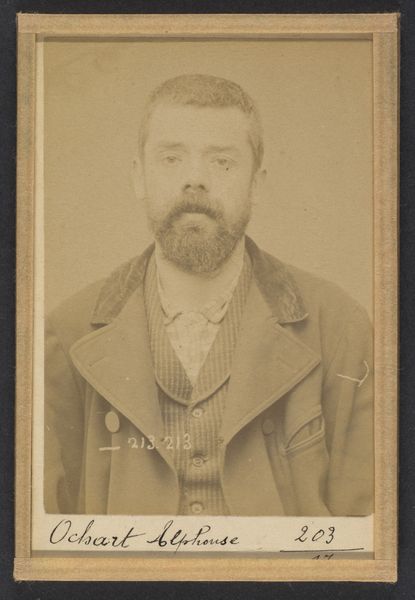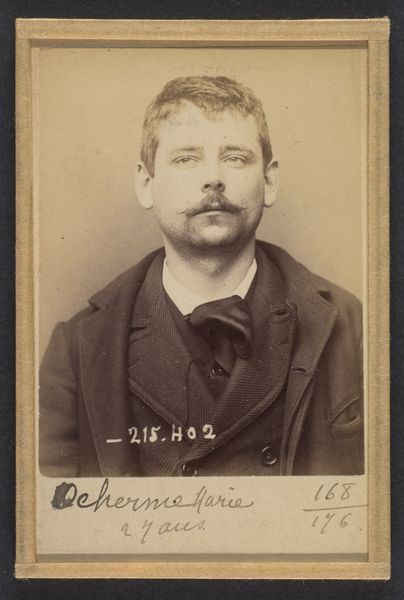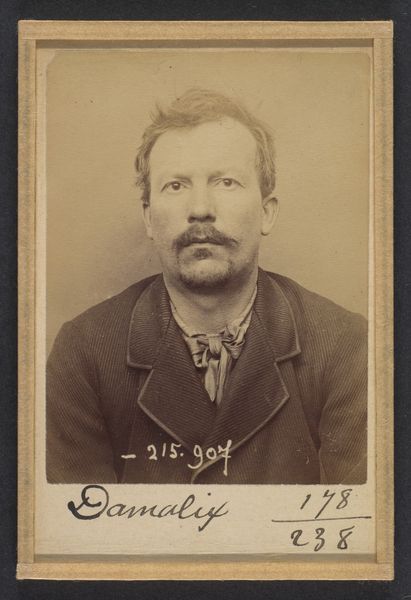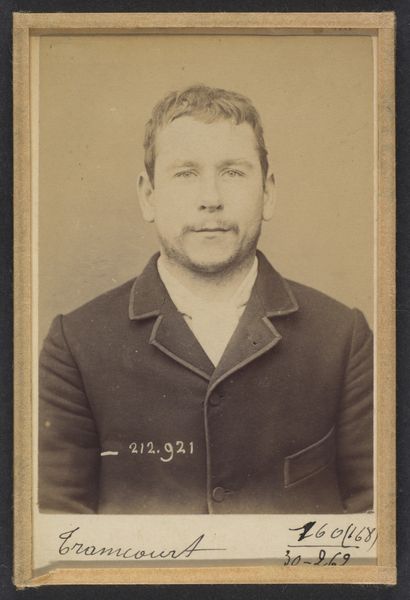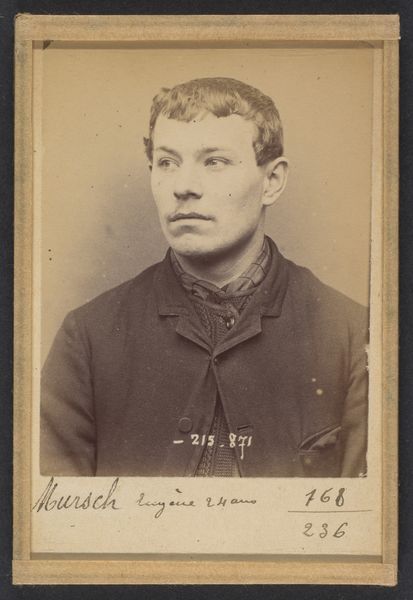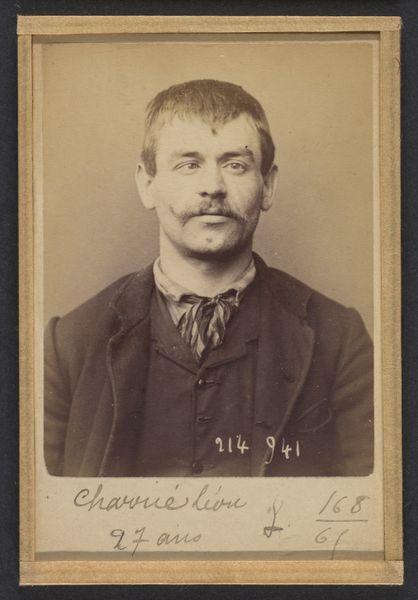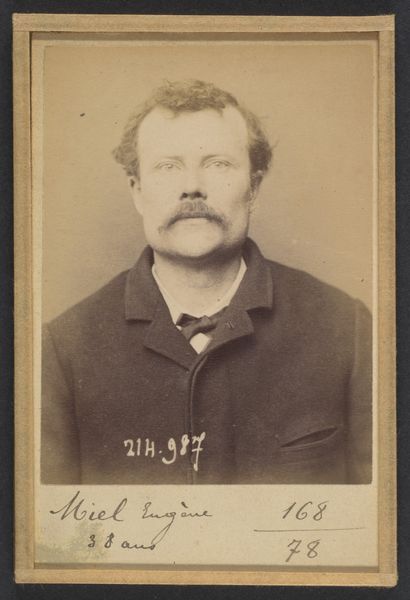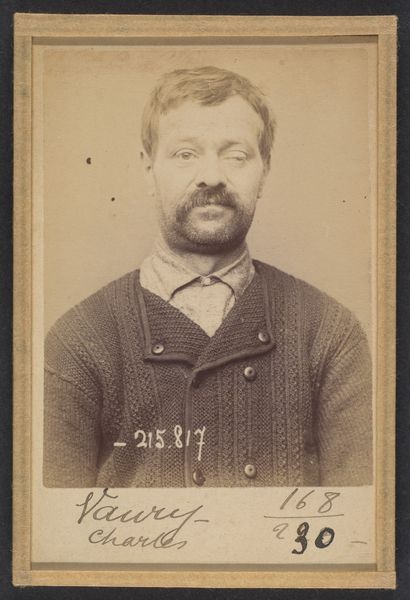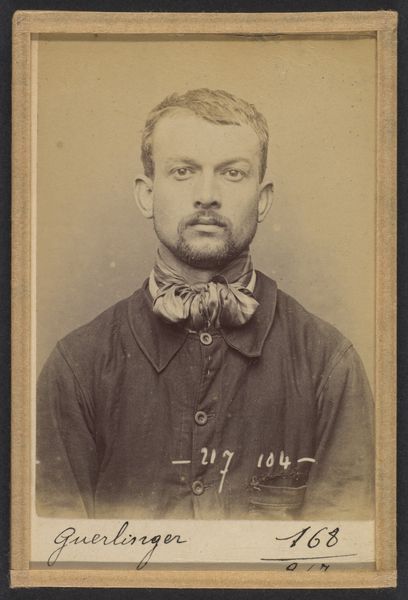
Baerisvuyl. Frédéric, Jean. 28 ans, né à Fribourg (Suisse). Ébéniste. Anarchiste. 8/1/93. 1893
0:00
0:00
photography, gelatin-silver-print
#
portrait
#
photography
#
historical photography
#
gelatin-silver-print
#
realism
Dimensions: 10.5 x 7 x 0.5 cm (4 1/8 x 2 3/4 x 3/16 in.) each
Copyright: Public Domain
Editor: This is a gelatin silver print from 1893, entitled "Baerisvuyl. Frédéric, Jean. 28 ans, né à Fribourg (Suisse). Ébéniste. Anarchiste. 8/1/93.", and it's credited to Alphonse Bertillon. It has such a documentary feel to it; almost clinical. What historical narratives can you read into it? Curator: Indeed. Bertillon was a pioneer in employing photography for criminal identification. He developed anthropometry, a system using body measurements to identify repeat offenders. How does knowing it was for policing shape your understanding? Editor: I see it less as art and more as a tool, part of a system to control individuals who were considered outsiders. It’s unsettling that his political beliefs are documented. Curator: Precisely! The mugshot gained traction in a time of burgeoning surveillance and state control. It raises crucial questions about the politics of identity, documentation, and the power dynamics inherent in image-making, especially regarding those deemed “deviant.” How might the context of anarchism in late 19th-century Europe amplify its significance? Editor: Anarchism was seen as a real threat, and that threat might have played into Bertillon's choice to photograph him, because Baerisvuyl posed a particular risk. Did this portrait also function as propaganda to enforce societal norms? Curator: Absolutely. These images became a method of othering, reinforcing notions of criminality, class, and perceived threats to the social order. It solidified, for the public, the notion of the criminal "type." What ethical considerations do such images provoke for contemporary viewers, considering their historical use? Editor: I hadn’t thought about it that way. Now I see how this photo sits at a nexus of power, social control, and the then-nascent science of criminology. Thanks, this was an unsettling image and perspective! Curator: And conversely fascinating. These visual relics offer vital insight into the fraught history of surveillance and social engineering.
Comments
No comments
Be the first to comment and join the conversation on the ultimate creative platform.
